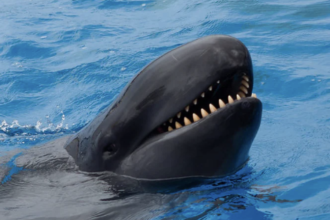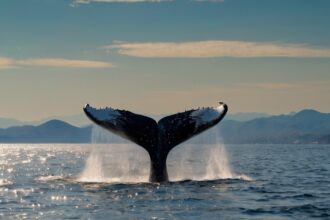What You’ll See While Whale Watching in Puerto Vallarta
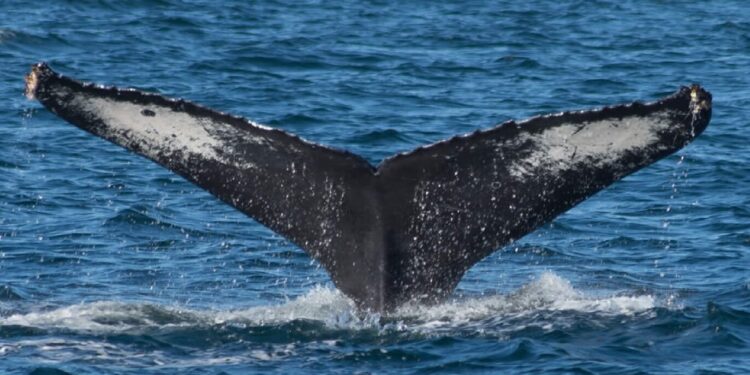
Picture yourself watching a 35-ton humpback whale leap almost entirely out of the water in Puerto Vallarta. The Bay of Banderas welcomes 500-700 of these magnificent creatures from December to March. These giants, reaching lengths of up to 56 feet, choose this location to mate and nurture their young.
Banderas Bay’s protected waters create a perfect haven for these marine mammals. Your chances to spot them peak at the time of January and February. Professional tours keep a safe 60-yard distance from the whales. This still allows visitors to witness these incredible animals thriving in their natural environment. Marine biologists often join these tours and give an explanation about whale behavior and characteristics. The adventure lasts 3-4 hours on water.
This piece highlights what you’ll see during your whale watching journey in Puerto Vallarta. The experience ranges from spectacular breaching displays to close encounters with these gentle ocean giants.
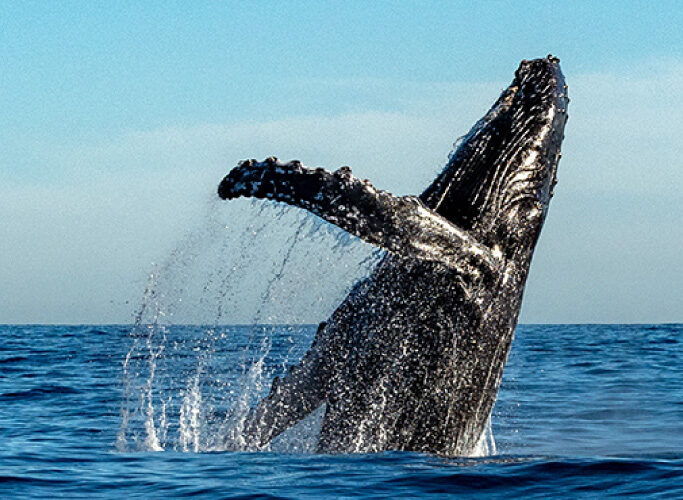
Table of Contents
- 1 The Magic Moment: What It’s Really Like Seeing Whales in Puerto Vallarta
- 2 Best Times and Places for Puerto Vallarta Whale Watching
- 3 Insider Tips for Spotting Whales Like a Pro
- 4 Choosing Your Perfect Whale Watching Experience
- 5 Making the Most of Your Puerto Vallarta Whale Adventure
- 6 Here are some FAQs about what you’ll see while whale watching in Puerto Vallarta:
- 6.1 Is whale watching worth it in Puerto Vallarta?
- 6.2 When can you see whales in Puerto Vallarta?
- 6.3 How much does it cost to go whale watching in Puerto Vallarta?
- 6.4 What kind of whales are in Puerto Vallarta right now?
- 6.5 What time of day is best for whale watching in Mexico?
- 6.6 Are there killer whales in Puerto Vallarta?
- 6.7 Why do humpback whales come to Puerto Vallarta?
- 6.8 What to wear when whale watching in Mexico?
- 6.9 What is the best month to see whales?
The Magic Moment: What It’s Really Like Seeing Whales in Puerto Vallarta
The waters of Banderas Bay burst into life as humpback whales arrive for their yearly visit. These magnificent creatures swim more than 3,000 miles from Alaska’s cold waters to reach this tropical paradise.
The thrill of the first sighting
You’ll spot your first whale when you see a distinct cloud of mist rising from the water’s surface. This isn’t just water spray – it’s warm air from the whale’s lungs that condenses in the cool atmosphere, mixed with surface water droplets and mucus. Small research boats with just 12 guests give you an up-close view of these amazing creatures.
Getting sprayed by a blowhole
These close encounters let you see powerful bursts of air as whales surface to breathe. You’ll hear a distinct sound that comes from the whale breathing out before taking another deep breath. On top of that, scientists use special drones with petri dishes to collect these exhaled breath samples. This gives them valuable data about the whale’s health and stress levels.
Witnessing acrobatic breaches up close
The most exciting moments happen when these 40-ton giants show off their acrobatic skills. Male humpbacks put on impressive surface displays to attract mates, including:
- Tail slaps
- Leaps
- Fluke displays
- Courtship rituals
These behaviors have a vital purpose – baby whales born in the bay need to build strength for their upcoming 3,000-kilometer journey. Tourists enjoy their time more when they get long, close encounters with these marine mammals. But guides stress the need to keep respectful distances to protect these magnificent creatures.
The magic grows as hydrophones on the boats pick up the whales’ mysterious songs. Visitors can listen to their haunting underwater communications. This mix of visual displays and acoustic experiences creates unforgettable moments for whale watchers in Puerto Vallarta’s waters.
Best Times and Places for Puerto Vallarta Whale Watching
Banderas Bay becomes a marine sanctuary when humpback whales make their annual migration from mid-December through March. Puerto Vallarta’s waters welcome between 300 to 500 humpbacks during this period.
Peak season sweet spots
January and February are the best months to watch whales as their numbers reach their peak. Most births happen from late December through January. Tours starting around 8:30 AM give you the best chance to see these magnificent creatures.
Prime viewing locations in Banderas Bay
Banderas Bay’s natural shape creates perfect whale watching conditions. The best spots include:
- Protected coves where mothers nurse their calves
- Deeper waters where males display courtship behavior
- Offshore areas visible from coastal viewpoints
The bay’s protective features make it a safe haven for mothers and their newborn calves. Boat tours are a great way to get close encounters, but you can spot whales from shore by looking for water spouts or clusters of tour boats.
Weather and water conditions that affect viewing
Puerto Vallarta’s sub-tropical climate creates excellent viewing conditions. Calm seas and clear visibility make early morning trips perfect for photography and comfort. Winter months bring clear skies, but you might need a light jacket for morning trips.
Morning tours work best if you get seasick because the water is smoother. Winter’s cool weather and clear skies create perfect conditions for whales and watchers alike. These features, along with Banderas Bay’s protected waters, make Puerto Vallarta one of Mexico’s most reliable whale watching destinations.
Insider Tips for Spotting Whales Like a Pro
Spotting whales in Puerto Vallarta depends on recognizing their signs and behaviors. We noticed that circular watermarks on the ocean’s surface show recent whale activity, which happens after tail slaps.
Reading the water’s surface
Your best strategy is to scan the horizon from left to right to find these marine giants. The most reliable sign is the distinctive spout – a bushy cloud that rises 10-16 feet high. These spouts look like fog-like mists as whales come up to breathe. Once you spot a spout, keep your eyes on that area because whales usually resurface within 4-6 minutes.
Understanding whale behavior patterns
Humpback whales show various surface behaviors that reveal their activities. These behaviors include:
- Breaching: The whale propels itself out of water, creating a spectacular display
- Spyhopping: The whale positions its head vertically above water to observe surroundings
- Logging: The whale rests quietly at the surface, partially exposing its body
- Bubble net feeding: Multiple whales work together, creating bubble rings to catch prey
Photography techniques to capture the perfect shot
Taking great whale photos needs specific camera settings and good preparation. A shutter speed of 1/1000 or higher is vital to get clear shots from moving boats. Photographers should be ready for changing light conditions since whales appear in open water or near shorelines where lighting is different.
Waterproof camera protection is a must. You should bring a camera bag or plastic covering to protect your equipment from spray. Keep your camera in continuous shooting mode to capture multiple frames of sudden surface activities.
Early morning gives you the best photography conditions with calmer seas and better visibility. Most tours use small vessels that hold 8-12 passengers and provide better movement for photo opportunities. Expert photographers suggest using a 70-200mm lens for most whale encounters because it focuses quickly – perfect for capturing sudden surface appearances.
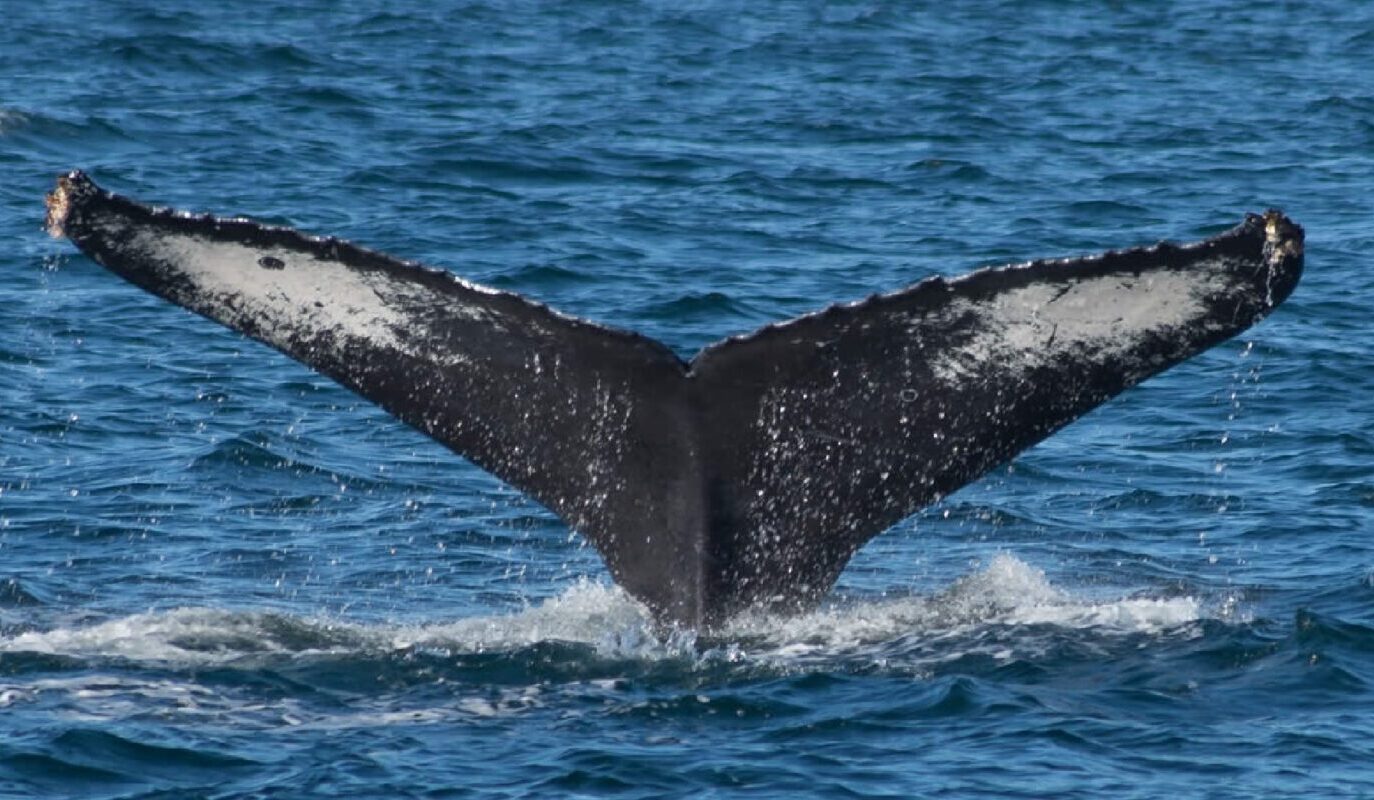
Choosing Your Perfect Whale Watching Experience
Your choice of vessel can make or break a whale watching trip in Puerto Vallarta’s Banderas Bay. Each boat brings its own advantages when you want to get close to these magnificent marine mammals.
Different boat types and their advantages
The bay’s waters welcome several vessel options, with three main types leading the way. Luxury catamarans excel with their twin-hull design that ensures stability and comfort. These boats come with restrooms and plenty of shade. Their size ranges from 58′ to 90′ in length. Zodiac boats stand out with quick movements and easy handling, letting you get closer to whales while staying at safe distances. Super pangas give you the best of both worlds by mixing comfort with easy movement, complete with cushioned seats and good shade protection.
Small group vs large tour experiences
The number of people on board substantially changes your whale watching adventure. Small groups of 8-14 passengers get personal attention from marine biologists. Larger catamaran tours pack more amenities like continental breakfast and open bars, though they carry more guests.
What to expect on various tour types
Your vessel choice and group size shape your tour experience. Zodiac adventures put photography and quick bay crossings first, making them perfect for thrill-seekers who want close encounters. These boats come equipped with special hydrophone equipment to catch whale songs.
Catamaran experiences focus on comfort with:
- Deli-style buffets and beverages
- Multiple viewing decks
- Expert bilingual guides
- Extended tour durations of 3-4 hours
Larger vessels work well for families and mixed-age groups because they have bathrooms, shaded areas, and open deck seating. Photo enthusiasts might prefer specialized photo safari tours that use smaller boats built just for whale watching.
Marine biologists lead most tours and explain whale behavior and characteristics. You’ll learn while enjoying amazing views. Tours last anywhere from 2.5 to 4.5 hours, based on your chosen experience.
Making the Most of Your Puerto Vallarta Whale Adventure
Good preparation will give you an unforgettable whale watching experience in Puerto Vallarta’s pristine waters. You should understand what to pack and how to prepare. This knowledge makes the difference between a magical adventure and a challenging day at sea.
What to bring and wear
Layers are everything in Puerto Vallarta whale watching tours. The tropical climate stays warm, but morning trips often start cool and windy. Pack light, breathable layers instead of heavy clothing that you can adjust throughout the experience. A waterproof windbreaker protects you well against ocean spray.
You’ll need these items for your whale watching adventure:
- Biodegradable sunscreen (mandatory for marine protection)
- Rubber-soled shoes for secure footing
- Sunglasses and a secure hat
- Camera and binoculars
- Water bottle for hydration
After booking, remember to pay the Marine Park Preservation Fee of 180 pesos and Marina entrance fee of 100 pesos. These fees support local conservation efforts and maintain facilities.
Avoiding seasickness
Seasickness affects even experienced travelers, so preparation is vital. Take medication like Meclizine (meclizina in Spanish) one hour before departure to prevent symptoms. Seasickness might get worse once the boat stops to observe whales if not treated properly.
These strategies work well to prevent seasickness:
- Stay hydrated but skip coffee and alcohol
- Eat light, bland foods before the trip
- Get enough rest the night before
- Focus on the horizon and avoid phone screens
The back of the boat has minimal motion and helps ease nausea if you feel uncomfortable. Fresh air works better than staying in enclosed cabin spaces.
Best viewing positions on the boat
The right viewing position improves your whale watching chances. Lower decks’ middle section gives you better stability. The back bench is the most stable viewing platform, which helps if you worry about motion sickness.
Photographers should stay near the boat’s center to balance stability with viewing angles. The captain can rotate the vessel 360 degrees, so everyone gets excellent viewing opportunities.
Small group tours with 8-12 passengers let you move around easily. These intimate settings make it simple to change positions while following safety rules. Professional guides help you find the best spots to watch these magnificent marine mammals while keeping a proper distance.
Puerto Vallarta’s whale watching adventures let you get rare glimpses into these magnificent marine giants’ lives. Banderas Bay’s protected waters create ideal spots to watch humpback whales during their yearly migration. The action reaches its peak in January and February.
Small group tours on specialized boats bring you close to these gentle giants. Larger catamarans give you comfort and amenities if you want to spend more time watching. The right clothes and best viewing spots will give a memorable encounter with these incredible creatures.
Puerto Vallarta ranks among Mexico’s best places to watch whales, thanks to expert guides, modern equipment, and Banderas Bay’s natural shelter. These majestic creatures swim thousands of miles to reach these warm waters. Patient watchers get to see spectacular shows of breaching, tail slaps, and other fascinating behaviors.
The key to a great experience lies in picking the right time and tour option. You should keep a respectful distance from these protected marine mammals. With good preparation and realistic expectations, you’ll witness nature’s most impressive displays in Puerto Vallarta’s crystal-clear waters.
Here are some FAQs about what you’ll see while whale watching in Puerto Vallarta:
Is whale watching worth it in Puerto Vallarta?
Yes, whale watching in Puerto Vallarta is absolutely worth it. What you’ll see while whale watching in Puerto Vallarta includes breathtaking displays of humpback whales breaching, tail slapping, and even mothers swimming with their calves. The experience is unforgettable and offers a unique opportunity to witness these majestic creatures in their natural habitat.
When can you see whales in Puerto Vallarta?
You can see whales in Puerto Vallarta during the winter months, typically from December to March. This is when humpback whales migrate to the warm waters of Banderas Bay for breeding and calving. Whale watching in Puerto Vallarta during this period guarantees incredible sightings and memorable encounters.
How much does it cost to go whale watching in Puerto Vallarta?
The cost of whale watching in Puerto Vallarta varies depending on the tour operator and package, but prices generally range from 50to150 per person. Some tours include additional perks like snacks, drinks, or guided commentary about what you’ll see while whale watching in Puerto Vallarta, making it a worthwhile investment.
What kind of whales are in Puerto Vallarta right now?
Right now, during the whale watching season in Puerto Vallarta, you’ll primarily see humpback whales. These majestic creatures are the stars of whale watching in Mexico, often spotted breaching, tail slapping, and swimming with their calves in the warm waters of Banderas Bay.
What time of day is best for whale watching in Mexico?
The best time of day for whale watching in Mexico, including Puerto Vallarta, is typically in the morning. Calmer seas and better lighting conditions make it easier to spot whales and enjoy what you’ll see while whale watching in Puerto Vallarta. However, afternoon tours can also be rewarding, especially during peak season.
Are there killer whales in Puerto Vallarta?
While killer whales are not commonly seen during whale watching in Puerto Vallarta, they are occasionally spotted in the region. Humpback whales are the main attraction, but the diverse marine life in the area means you might encounter other species during your whale watching in Mexico adventure.
Why do humpback whales come to Puerto Vallarta?
Humpback whales come to Puerto Vallarta to breed and give birth in the warm, protected waters of Banderas Bay. The bay provides a safe environment for mothers to nurse their calves, making whale watching in Puerto Vallarta a prime opportunity to witness these gentle giants up close.
What to wear when whale watching in Mexico?
When going whale watching in Mexico, wear comfortable, layered clothing, as it can be cooler on the water. Don’t forget sunscreen, a hat, and sunglasses to protect against the sun. Non-slip shoes are also recommended to ensure safety while enjoying what you’ll see while whale watching in Puerto Vallarta.
What is the best month to see whales?
The best month to see whales in Puerto Vallarta is typically January or February, when humpback whale activity peaks. During this time, whale watching in Puerto Vallarta offers the best chances to witness breaching, tail slapping, and even newborn calves swimming alongside their mothers.
